THE HOSPITAL OF THEIR DREAMS
By Stephen Dark
October 9, 2020
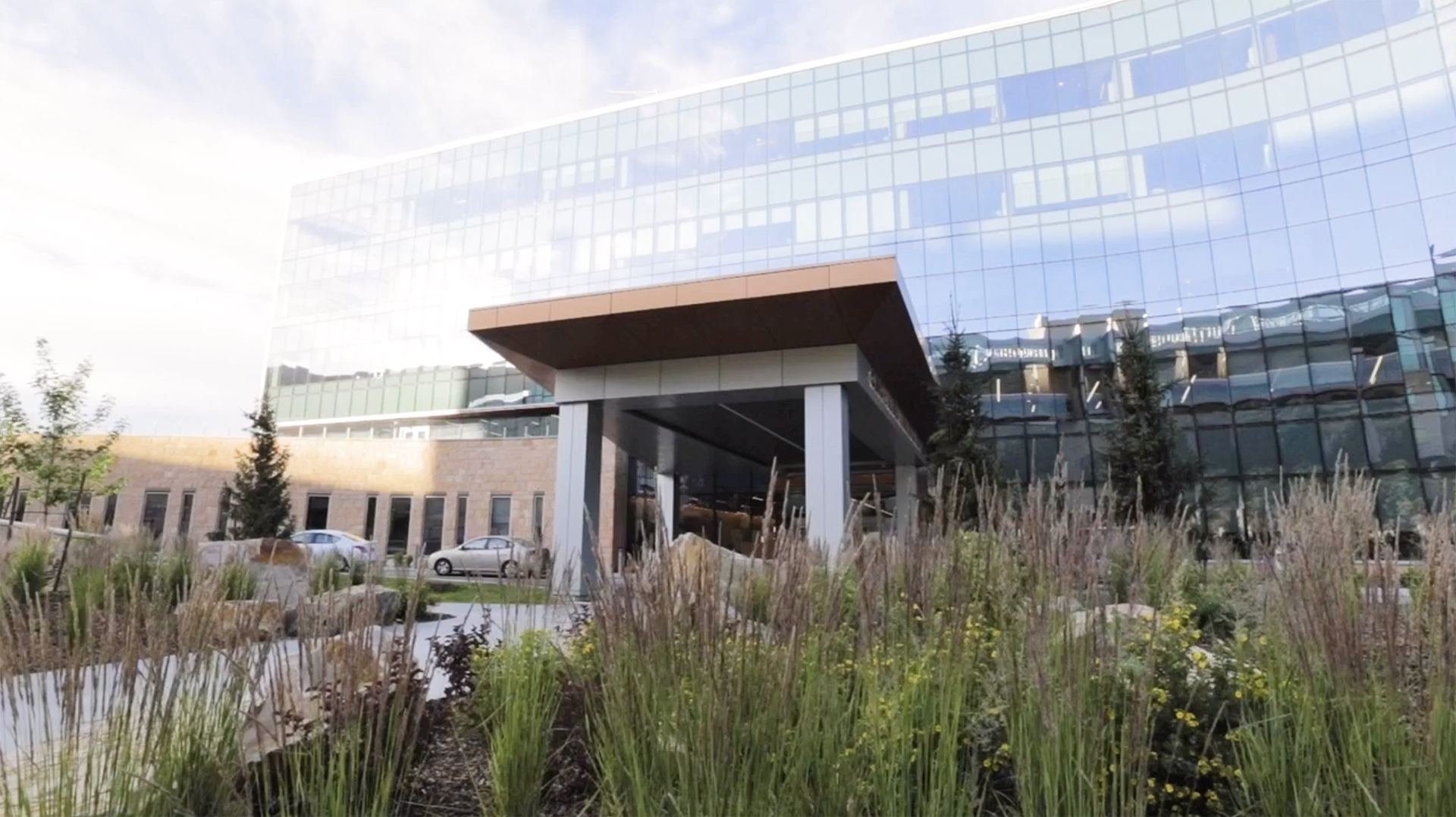
At the heart of the Craig H. Neilsen Rehabilitation Hospital is a dedication to helping patients discover their resilience after traumatic spinal cord injuries.

Kaylee Schneider’s horse smelled the wild mustangs even before they came galloping over the ridge. That October 2018 afternoon, the mare bolted as she tried to grab the reins and get her boots into the stirrups.
Under the pale-blue Wyoming sky, Schneider’s horse thundered ahead while the 23-year-old struggled for control. When she managed to pull the horse up short, the animal planted its front hooves and launched Schneider over her head. “Like a lawn dart straight into the ground,” said a friend who was riding with her.
When Schneider opened her eyes after being unconscious for three minutes, she couldn’t feel her legs.
“Don’t touch me, don’t move me,” she said. “I broke my back.”
Her self-assessment was more than intuition. She’d worked as a certified nursing assistant since she was 18 and in spring 2018 was one of 40 successful candidates out of 500 to start a two-year nursing associate degree at Western Wyoming Community College in Rock Springs.
Half an hour later, a local ambulance reached the isolated spot. When the EMTs tried to get a line into her, she coolly told them which needle gauge to use. Heavily sedated, she was flown to University of Utah Hospital.
Her mother Angie Schneider grabbed clothes from their home and drove the three hours to Salt Lake City. Kaylee Schneider was going to be fine, she convinced herself. “They’ll take her, fix her, and she’ll go home,” she thought.
But when orthopedic surgeon William Spiker, MD, emerged from the four-hour surgery, all he had was bad news. She had broken vertebra C1, C2, and C3 in her neck and T5, T6, and T7 in her spine. The T6 break paralyzed her. There was only a 5 to 10 percent chance she would walk again.

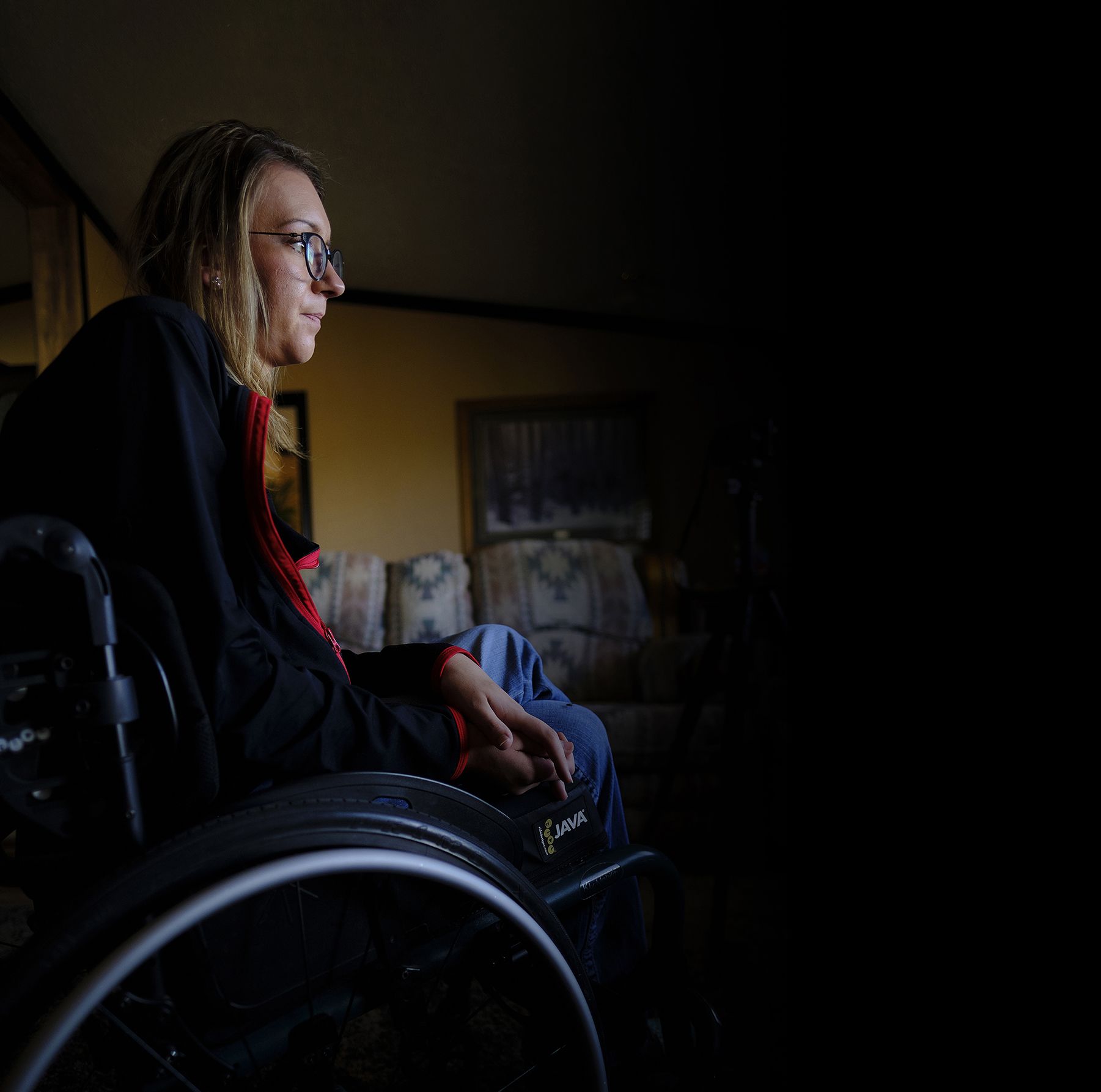
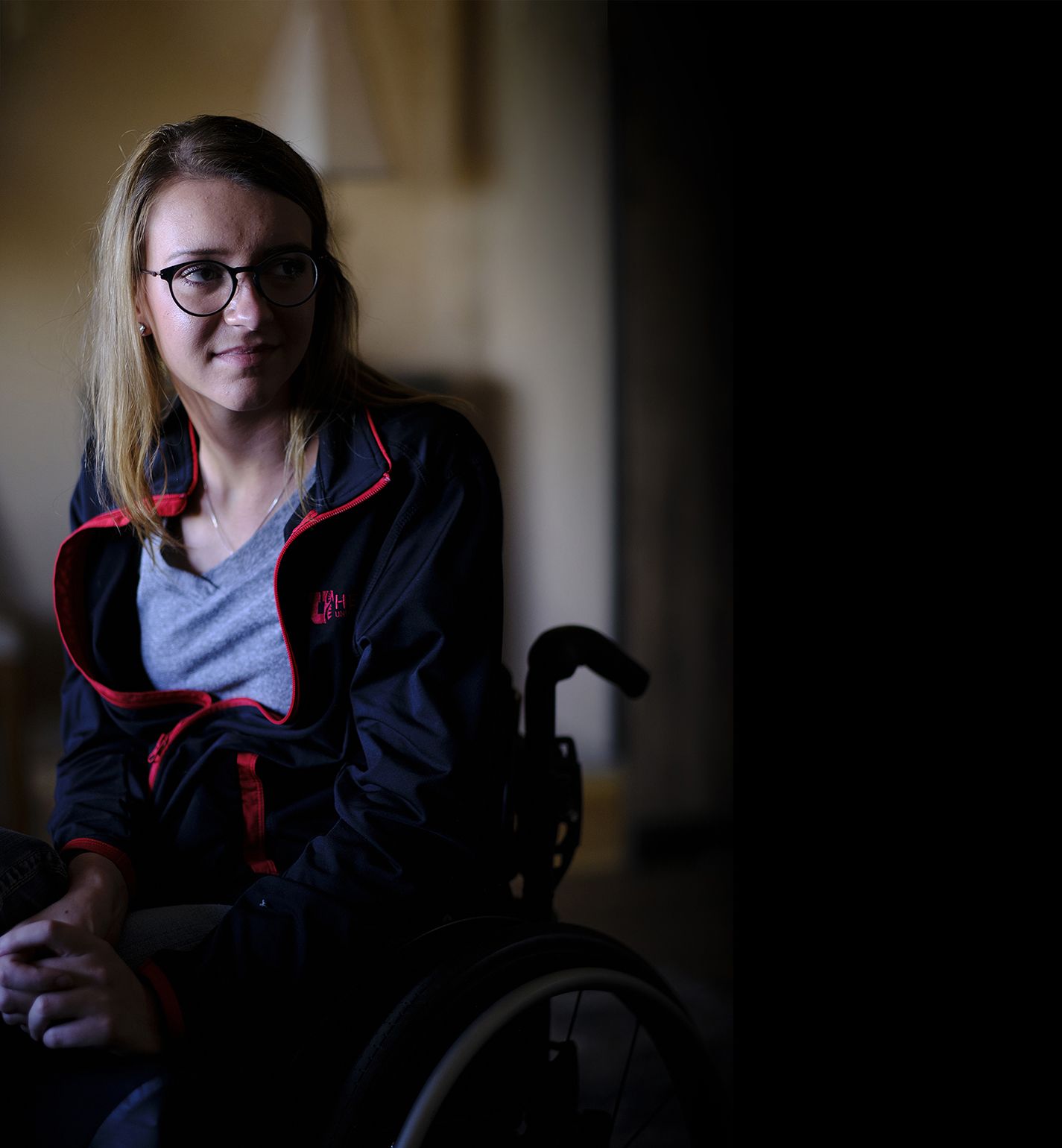

TO OFFER HOPE
After a few days in the ICU, Kaylee Schneider was transferred to University of Utah Hospital’s Physical Medicine & Rehabilitation division (PM&R) under the care of Jeffrey Rosenbluth, MD, medical director of the Spinal Cord Injury Acute Rehabilitation program. Rosenbluth explained the challenges she faced, how to care for herself and what to watch for.
“You don’t have to figure out the rest of your life today,” Rosenbluth tells patients.
That said, there is some degree of urgency. After all, a patient's typical stay is limited to only four-to-six weeks. He and his team broke down into small, achievable and motivating goals what she had to address in the days and weeks ahead.
Just before Christmas, Kaylee Schneider was released from the hospital. She dreaded returning home, but Rosenbluth had given her a goal to focus on. In summer 2020, the Craig H. Neilsen Rehabilitation Hospital would open, he told her, replacing the ground-floor rehab department where she had received her care. The new facility and its dedicated staff are committed to helping patients discover their resilience after traumatic spinal cord injuries. Would she be interested in working there as a nurse if she finished her studies?
Rosenbluth’s job offer was one they both took seriously.
“Working with patients in the same boat as I am,” Schneider said, “I feel like my example can bring them hope.”
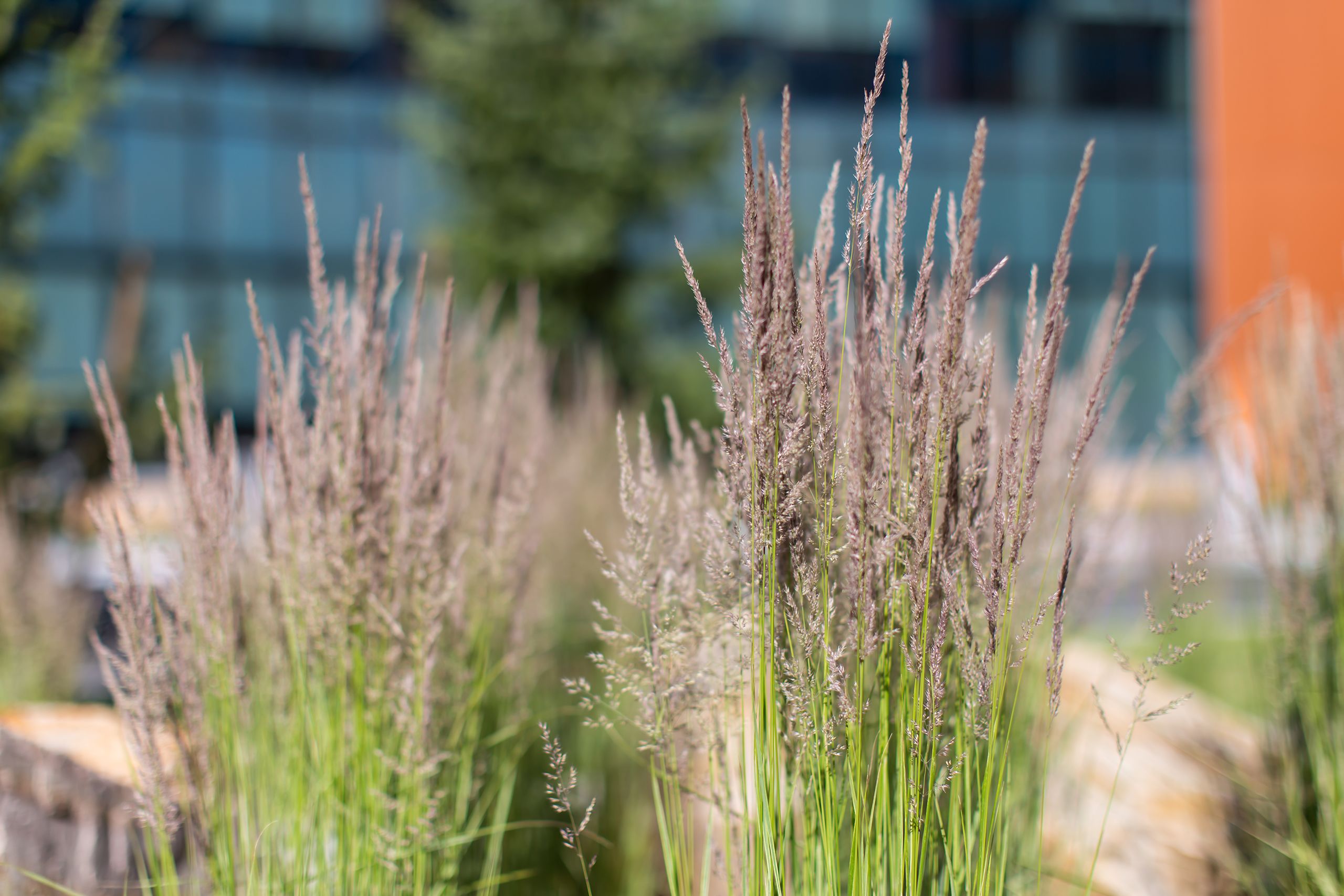
Lust for life
The new hospital was named after a man who built a business empire after a car crash left him with a severe spinal cord injury (SCI). The Craig H. Neilsen Foundation, which Neilsen established to improve the quality of life for those living with SCI donated $47.5 million towards the new hospital. SCI care now has a home that will help redefine the world of rehabilitation for the 21st century and beyond. For Rosenbluth, each time he visited the hospital as the finishing touches were put in place, he still couldn’t quite believe that his dream of an innovation-driven, state-of-the-art facility dedicated solely to rehabilitation had come true. “Every day,” he said, it’s as if he has to pinch himself. “I can’t believe it.”
David Steinberg, MD, executive medical director of the Craig H. Neilsen Rehabilitation Hospital, viewed it as “our iconic home.” Digital and medical innovation dedicated to improving patient care and experience won’t be limited to Rosenbluth’s SCI department, he said, but will extend across all forms of rehabilitative care, bringing new approaches to the treatment of strokes, brain injuries, and amputations.
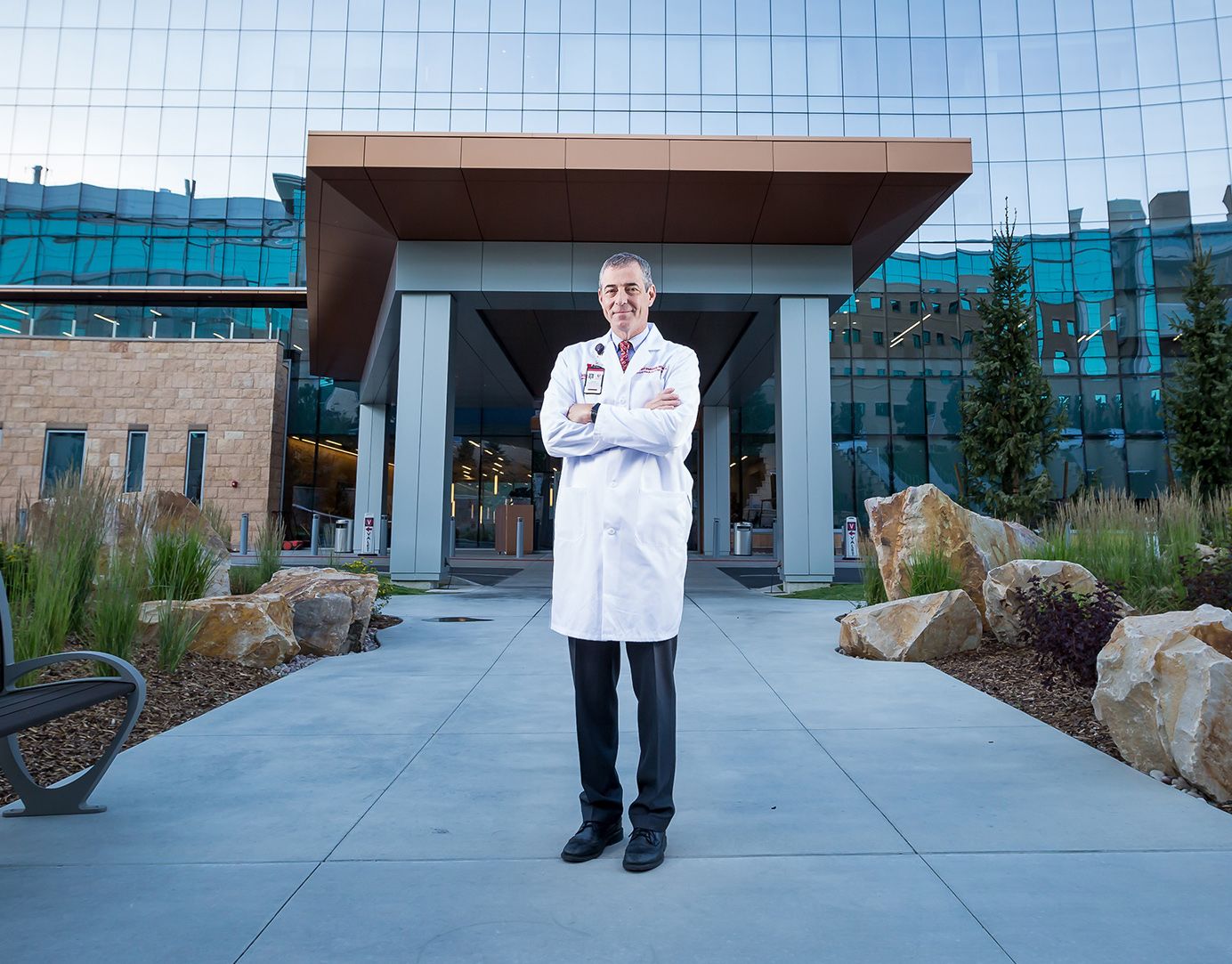
The Craig H Neilsen Rehabilitation hospital's executive medical director, David Steinberg, MD, stands before the main entrance of what he called "our iconic home."
The Craig H Neilsen Rehabilitation hospital's executive medical director, David Steinberg, MD, stands before the main entrance of what he called "our iconic home."
“We wanted it to be a place if anyone in your family is ever in the unfortunate position to need a world class rehabilitation facility that they think, ‘I want to go to the University of Utah,’” said Kym Eisner, executive director of the Craig H. Neilsen Foundation. “This also needed to be a facility that would help the university recruit top clinicians and researchers.”
The hospital boasts 25 “smart” patient rooms on each of the top three floors—third floor is home to spinal cord injury, the fourth to brain injury, and the fifth to stroke. Floor-to-ceiling windows reveal the Wasatch Front to the east and the Oquirrh Mountain range to the west.
The windows bring the sun’s warmth to patients as they negotiate the space between what their bodies once could do and what the injury, the world, and their own will permits them to do now. The building gently curves, as if offering an embrace to those inside.
There’s a sense of healing calm when you walk into the lobby beneath softer lighting than you’d expect in a hospital. The union of Craig H. Neilsen’s passionate dedication to any detail in his resort-casino empire that would impact the customer experience with the patient and family-centric focus of the U’s approach to rehabilitation has created a seamless and unique medical experience.
“We’ve all been in newer clinics or hospitals,” says Rosenbluth, “and there’s still some sense that, despite them being kind of beautiful, you don’t want to spend one more second than you have to in the space. That’s what’s so wonderful about this building. You wouldn’t mind hanging out here. You feel good about it.”
The hospital celebrates not only the memory and remarkable legacy of the man whose name it bears, but also the heart and fight of all those who challenge the limitations of their disability daily. Craig H. Neilsen believed that each person with a spinal cord injury had to find their own inspiration to continue. “In my case, I got mad,” he said, quoted on the Craig H. Neilsen Foundation’s website. “I was forced to get active and get some things accomplished because I had my family depending on me.”
Many of Rosenbluth’s patients are determined, like Kaylee Schneider, to burn through each day in search of progress and a new, fuller identity. What unites Schneider and the legacy of the man whose name headlines the hospital she may well one day work in is a common thread, Rosenbluth said.
“This lust for life doesn’t seem diminished by spinal cord injury,” he said. “Sometimes our patients seem more driven than ever.”
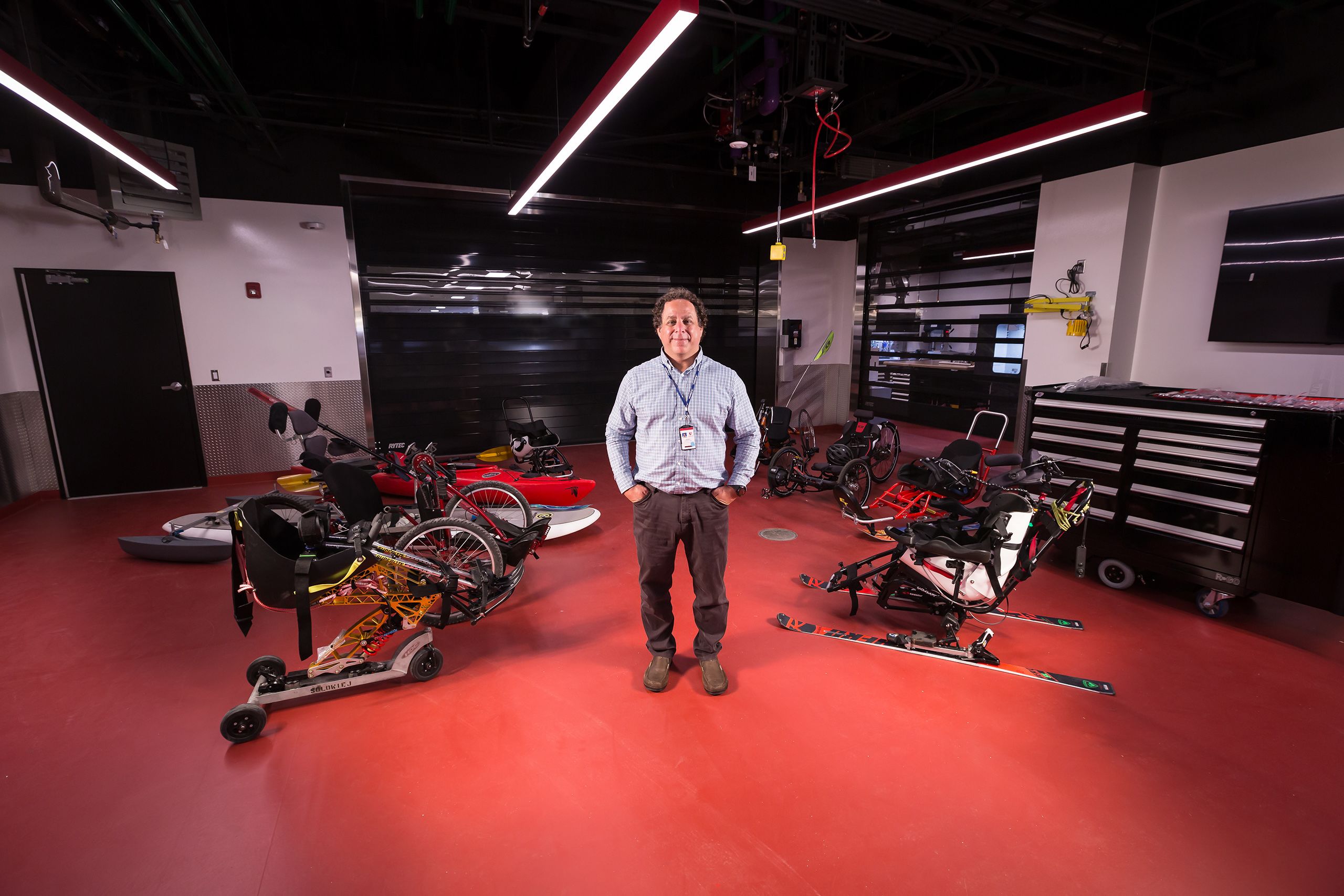
a question of identity
Shortly before Craig H. Neilsen set up the foundation that would one day indelibly link his name to the University of Utah’s commitment to rehabilitation care, in fall 2001, a young doctor named Jeffrey Rosenbluth joined the department. Rosenbluth had a penchant for wearing a baseball cap, flip-flops, shorts, and a T-shirt former staff recalled. “I kind of like this guy already,” one thought when she met him for the first time. They soon discovered he wanted to give patients the best experience they could—and that meant fighting for them. In Rosenbluth’s stubborn determination to not only do the best for his patients, but also develop new technology and equipment to improve their quality of life, rehab’s patients and staff found their greatest ally.
Rosenbluth grew up in Encino, California, the son of a cardiologist. He began his career in rehabilitation in 1985 while at college as a volunteer adaptive sports teacher. He gave skiing lessons to an 18-year-old disabled student and saw how much more impactful the slopes were for his patient compared to standard medical therapies. That experience seeded his passion for improving the lives of SCI survivors.
He’s also a self-professed “nerd” who is obsessed with the benefits technology can bring to the lives of patients after they leave the hospital. He fell in love with the dream of inventing something and working with engineers to make it a reality. “That partnership is so satisfying to me,” he said
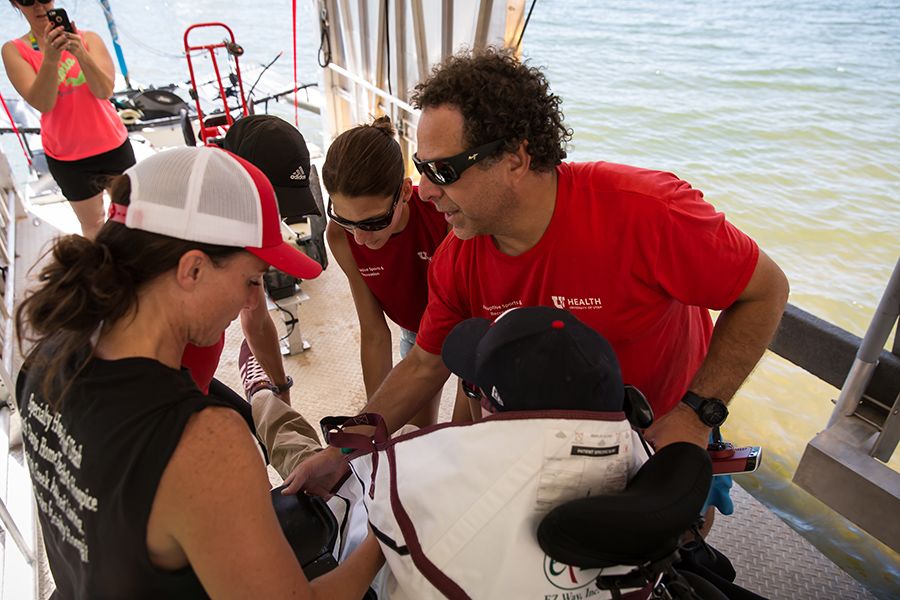
No two spinal cord injuries are alike, with more than half of rehabilitation patients having incomplete injuries, ranging from being wheelchair dependent to limited walking to more fully walking. Many without use of their hands have to rely their entire lives on their shoulders or triceps. Despite such disparities, the goal is always the same: independence.
SCI patients need determination in the face of funding limitations. “That can put an arbitrary end to the rehabilitation process, cutting us off at the time when rehab is really starting to make a difference,” Rosenbluth said. When the focus of someone’s identity is their job, their hobby, or their sport, it really isn’t enough to just do basic rehabilitation, he argued.
“We need to be responsible for helping people return to whoever they want to be.”
Rosenbluth cites 18-to 30-year-olds injured in sports accidents. “When you’re young and active, much of your identity is wrapped up in sport,” he said. “Ask ‘Who am I?’ and the answer is ‘I’m a skier,’ or ‘I’m a biker.’ You have a traumatic injury and your identity is ripped away from you. How can I ever be that again? But short of being a roofer, you can resume almost every aspect of your life.”
Rosenbluth set out to help patients make those connections by launching Technology Recreation Access Independence Lifestyle Sports (TRAILS). Run by Finnish skiing legend Tanja Kari, TRAILS began by schooling SCI patients in sports and activities once they were discharged from PM&R, a diagnosis pool that has since expanded to cover the many traumatic injuries that find their way to rehabilitation.
Years later, in 2006, U of U Health awarded Craig H. Neilsen the Distinguished Alumni Award, but before his planned March 2007 trip to receive it, he died unexpectedly.
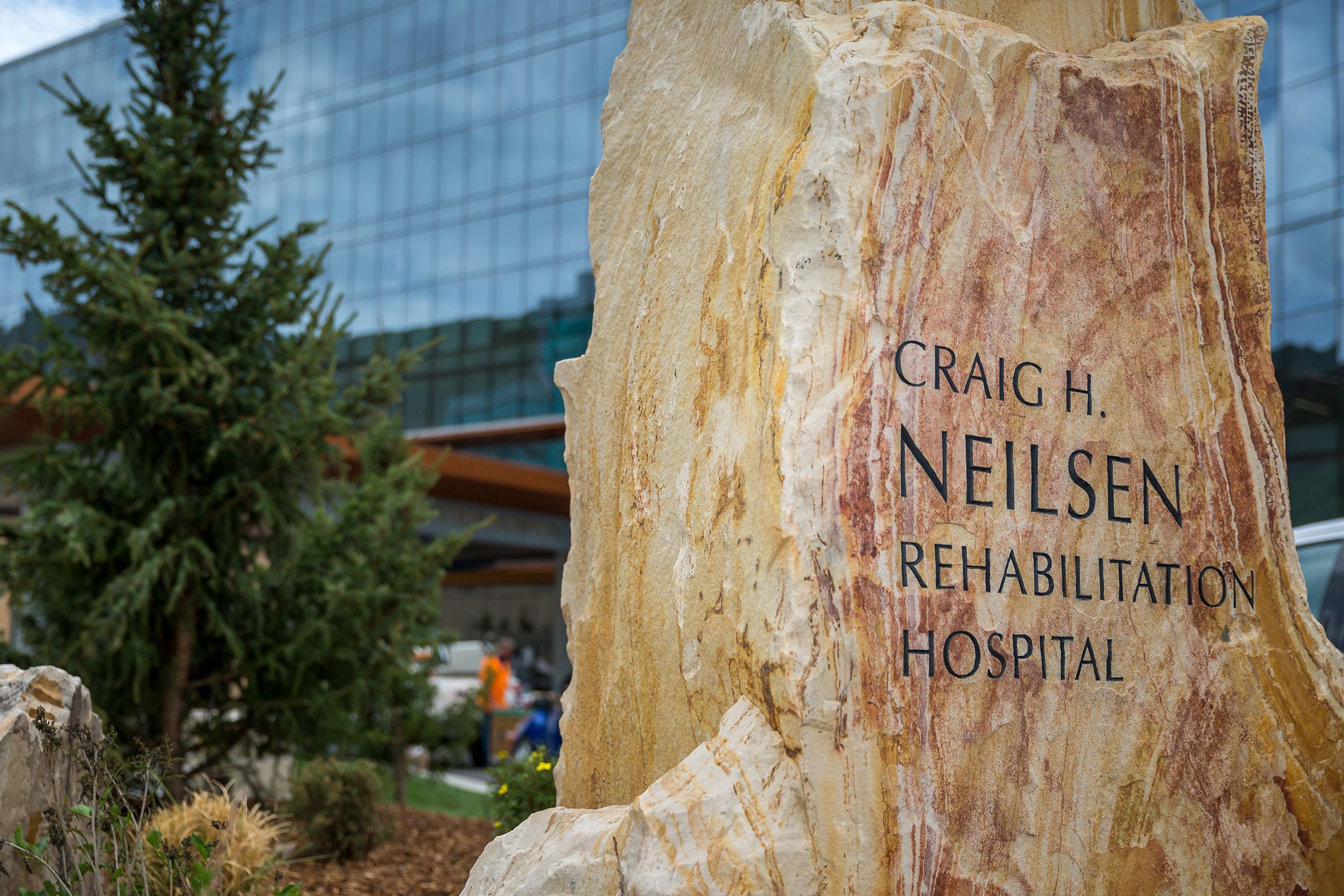
dream believers
The Craig H. Neilsen Rehabilitation Hospital was designed with utmost care and attention to detail.
For example, the ceiling in the lobby is covered in high quality walnut flooring.
And the Beth Hersh Goldsmith garden, located in front of the main entrance, incorporates plants chosen to both reflect and relate to those found naturally in Utah.
The garden helps patients working with therapists to enjoy the wild outdoors of the Beehive state, while also offering them a refuge with the protected, peaceful feeling of a private sanctuary.
Within and outside the hospital, patient accessibility is fundamental to the building’s design.
“There shouldn’t be a single door that would prevent someone with the least amount of function to be able to maneuver through the hospital,” Rosenbluth said.
“Take doors, elevators, and rooms—could you as someone on a ventilator with no movement below your head feel comfortable going anywhere in this hospital, controlling room lighting, or using an elevator with sip and puff technology? All of those things are built into this hospital. As far as I know, it’s for the first time ever.”

moving on
In the two years since Kaylee Schneider’s accident, several other doctors have offered her jobs at their practices, but she still wanted to work for Rosenbluth. By the end of June 2019, her sights were set on moving into dorms come late August and restarting her nursing associate degree. She also wanted her independence back.
After you get hurt, things change, she said. Through introspection and soul-searching, she’d taken time to “get to know the new me.” There are changes she didn’t quite expect, like how the trauma from the accident and its aftermath made her eyelashes grow longer and her hair fall out, only to grow back thicker.
On Saturday morning, August 17, 2019, Kaylee Schneider, her boyfriend Josh, and her parents made the 45-minute drive from their home to the dorms at the Western Wyoming Community College campus in Rock Springs.
Black T-shirt clad members of the wrestling team, the Wyoming Stampede, unloaded boxes out of the truck, as Kaylee Schneider roamed through the rooms in her wheelchair, checking out her new home.
While she’s having to do a retread of her first semester, nursing is more personal for her now that she’s been a vulnerable patient. “It will help me be a better nurse, knowing the other side,” she said.
Angie Schneider was so proud of her daughter, she said, of who she is and what she’s become and how she’s determined to inspire others to live beyond their disability.
The torch dedicated to improving SCI care that Craig H. Neilsen lit and Rosenbluth has carried forward now lights the way for future generations of rehabilitation-specialized staff like Kaylee Schneider to see dreams built into reality.
“If she wants to do nursing, she’s going to be a nurse,”
Angie Schneider said.
“Nothing’s going to stand in her way.”
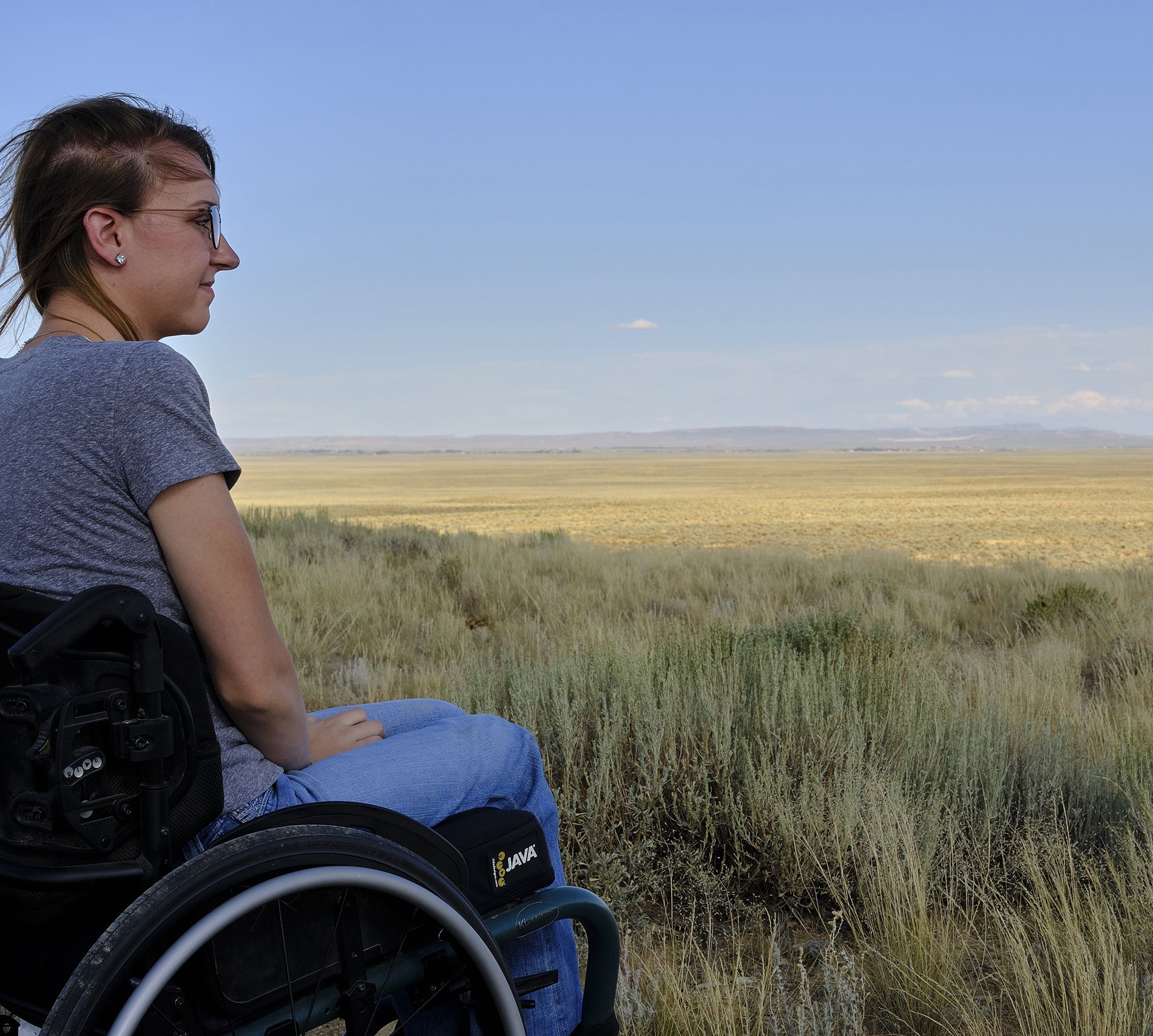
THE HOSPITAL OF THEIR DREAMS
Written by: Stephen Dark
Design by: Luat Nguyen
Photography by: Charlie Ehlert
Portraits of Kaylee Schneider, her mother and the Wyoming landscape by: Harold Bjork
Edited by: Kathy Wilets and Kym Eisner of the Craig H. Neilsen Foundation


